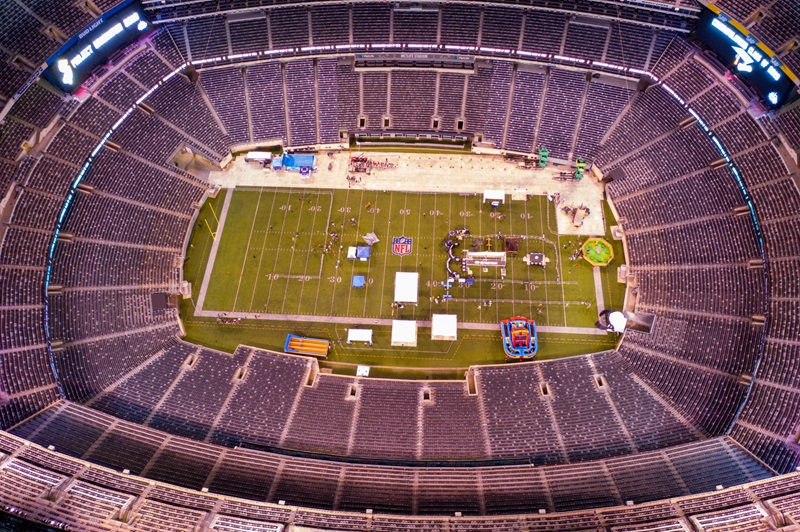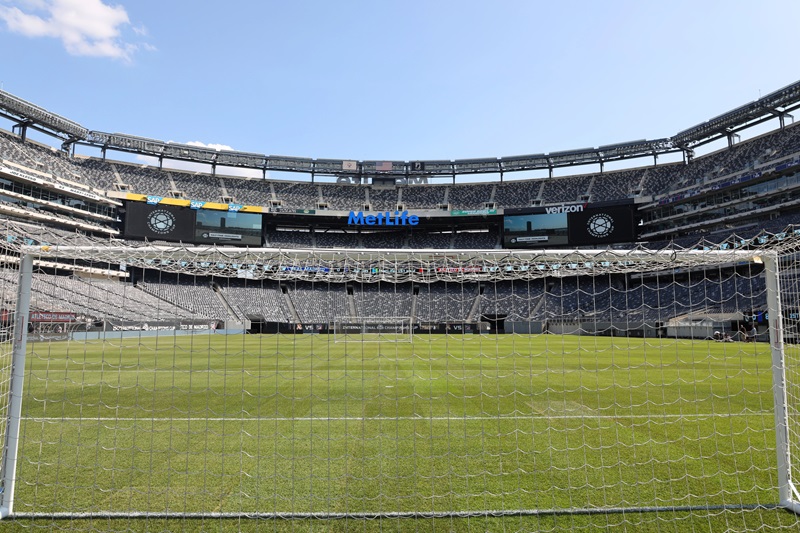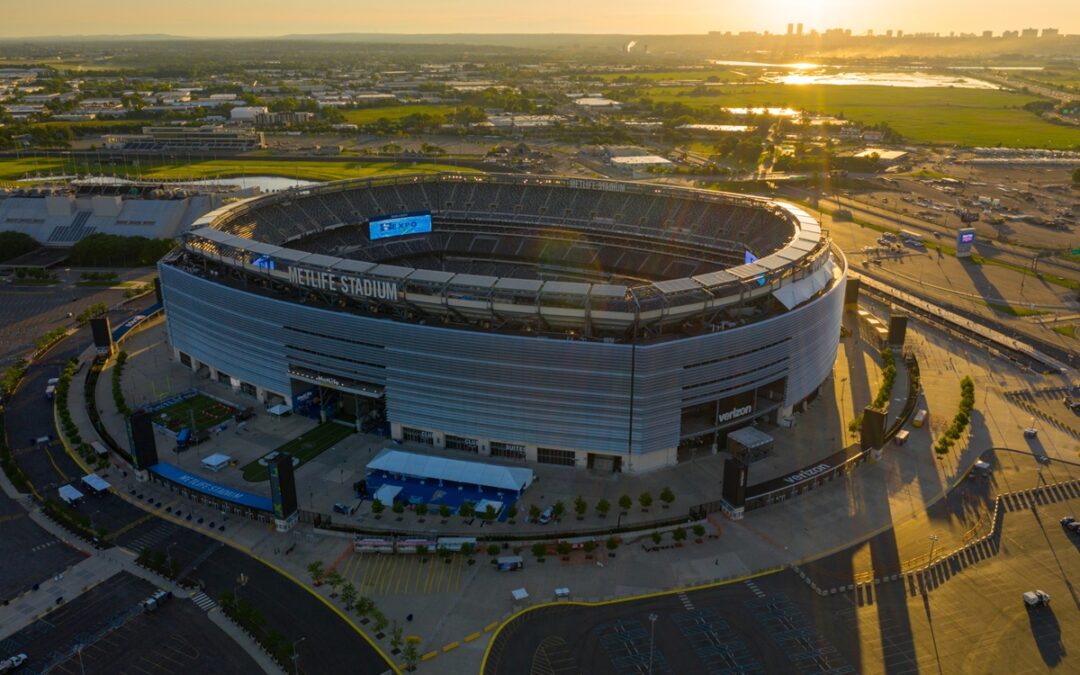In July 2026, the eyes of the football world will turn to an unexpected place to crown its new champion: a stadium set in the meadows of the Meadowlands, in East Rutherford, New Jersey. There, MetLife Stadium —renamed by FIFA for the tournament as New York New Jersey Stadium— will become the final stage of the most extensive and ambitious World Cup ever organized.
The decision, announced after months of negotiations and rivalry between major cities, surprised many not only because of the venue itself. It revealed much about the new power dynamics shaping the sport—and how an infrastructure originally designed for American-style entertainment ended up becoming global football’s chosen capital.
Why New York Beat Out Los Angeles and Dallas
For years, it seemed the battle for the final would come down to two Western heavyweights. SoFi Stadium in Los Angeles symbolized technological sophistication. AT&T Stadium in Dallas offered the largest capacity and a planned renovation to widen the field. But disputes over revenue sharing, FIFA’s structural requirements, and something as basic as pitch width tipped the balance. SoFi lacked the necessary width; AT&T Stadium, though massive, proved difficult to adapt.
MetLife, though less glamorous, had something no other venue could match: a balance of market strength, experience hosting massive events, and a metropolitan environment where the biggest commercial interests in global sports naturally converge. The decision even surprised local authorities, who expected a major role—just not the biggest prize of all.
A Stadium Built for Spectacle That Won Over Football
Opened in 2010, MetLife Stadium remains one of the most expensive and functional venues ever built for American sports. Home to the NFL’s New York Giants and New York Jets, it was designed from the start to host major concerts, televised spectacles, and any event capable of filling its more than 82,500 seats.
Roofless, lined with LED screen rings that can transform the venue’s atmosphere, and backed by logistics tested in dozens of high-stakes finales, the stadium built its international reputation long before football took serious notice.
A Record of Unforgettable Nights
Few venues can say they witnessed Lionel Messi crying inconsolably, as occurred after the 2016 Copa América Centenario final, when Argentina fell to Chile in penalties. That night, MetLife learned what it meant to host an emotional tidal wave painted in light blue and white.
From Neymar with Brazil to Cristiano Ronaldo with Portugal, the sport’s biggest stars of the last decade have also played on its turf. And in 2025, the stadium closed out the FIFA Club World Cup with a Chelsea vs. PSG final that confirmed its ability to handle top-tier matches without losing pace or organizational precision.
Related article: Two Hosts, One Vision: How the 2026 FIFA World Cup Will Forever Change Mexico and Canada
How the Stadium Will Transform for the World Cup

Although widely praised for its versatility, football requires specific conditions. To meet FIFA standards, the stadium will remove 1,740 corner seats—an adjustment designed to enlarge the field and allow fluid play. The installation of natural grass has also been confirmed, after years of complaints about the hardness of the artificial turf used during the NFL regular season.
Logistics: A Monumental Challenge
Despite being just a few kilometers from Manhattan, getting to MetLife isn’t as simple as hopping into a taxi and stepping out at the gate. Access relies on train connections like the Meadowlands Rail Line—operational only on event days—and a new $35 million rapid bus transit system. It will be a major test for the already strained transportation networks of the U.S. Northeast, long accustomed to managing vast flows of visitors in complex urban settings.
The Show Also Happens at Halftime
A first-of-its-kind feature will make this final unlike any before: for the first time, a World Cup title match will include a halftime show. FIFA announced the decision proudly, aligning itself with the entertainment model made famous by the NFL. Coldplay, in partnership with Global Citizen, will produce the show and lead a takeover of Times Square during the decisive weekend. This move situates the final not only in the biggest television market on the planet, but also in the cultural heart of a city that turns any event into a global trend.

From American Football Giants to Hosts of the World’s Game
New York and New Jersey have deeper football roots than many imagine. In 1994, Giants Stadium—MetLife’s predecessor—hosted a quarterfinal and a semifinal of the World Cup. It later staged the opening match of the 1999 Women’s World Cup. The sport in this region has grown since the days when Pelé played for the Cosmos, drawing crowds eager to embrace what was then a budding passion.
The city’s clubs—NYCFC, New York Red Bulls, and Gotham FC—represent a thriving ecosystem. The metropolitan area is home to the headquarters of the NFL, NBA, MLB, NHL, and MLS, providing unmatched resources, connections, sponsorship opportunities, and media firepower. The World Cup isn’t landing in a football desert—it’s arriving in a multicultural crossroads where sport is a common language.
The Final That Will Close an Unprecedented World Cup

The 2026 tournament will be the first with 48 teams and 104 matches, an expansion that required a complete redesign of the calendar and host geography. MetLife will not only host the final; it will stage multiple group matches, a round-of-32 clash, and a round-of-16 match, making it one of the competition’s central hubs.
The choice of this venue carries a powerful message: FIFA is betting on a region that combines infrastructure, market power, and media visibility like no other. At the same time, it recognizes that the final must take place in a city capable of turning a match into a cultural phenomenon. New York and New Jersey, together, fit that profile effortlessly.
A Future Defined by Scale
MetLife Stadium will be remembered—whatever happens—as the place where the first truly continental World Cup came to an end. Where travel distances stretched, stadium designs varied, and narratives became more unpredictable than ever. On its pitch, the echoes of a tournament reshaping the rules of global spectacle will converge.
On July 19, 2026, when the referee blows the final whistle, the stadium will have changed. So will the World Cup. And perhaps by then, New Jersey will no longer seem surprising—but rather, simply the home of the biggest match in football history.
Portrait photo: Depositphotos







